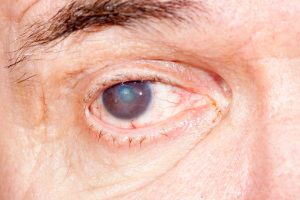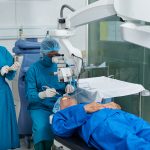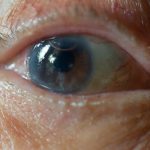 June is cataract awareness month, a time where we bring attention to the leading causes of vision loss in the United States and the leading cause of blindness in the world. We at Bel Marra want to do our part and spread the word on this life-threatening condition. We have compiled a list of articles on potential cataract risks, nuclear cataracts, and what you should know about cataract surgery. There are also many things you can do at home with cataract home remedies, which we have also provided information on.
June is cataract awareness month, a time where we bring attention to the leading causes of vision loss in the United States and the leading cause of blindness in the world. We at Bel Marra want to do our part and spread the word on this life-threatening condition. We have compiled a list of articles on potential cataract risks, nuclear cataracts, and what you should know about cataract surgery. There are also many things you can do at home with cataract home remedies, which we have also provided information on.
Cataract risk increases with chronic sunlight exposure: Study
The risk of cataracts increases with chronic sunlight exposure, research shows. UV light from the sun has been long known to cause damage to the skin, but the 2014 study has also found it can damage eyes, too.
Advertisement
Oxidative stress is a chemical reaction that occurs when cells consume oxygen and other fuels as a means to produce energy. This is a natural process associated with aging and is often tied to age-related problems. Continue reading…
 Nuclear cataracts: Causes, symptoms, and treatment
Nuclear cataracts: Causes, symptoms, and treatment
Nuclear sclerotic cataracts are a normal part of aging, to some degree. This condition minimally interferes with vision. In nuclear cataracts, an excessive amount of light scatters, leading to a central opacity (cloudy area).
Nuclear cataract progresses slowly and can lead to greater impairment of distance vision, although close-up vision may improve. In its early stages, nuclear cataracts can result in hardening of the lens. As it progresses further, yellowing and browning of the lens occur, causing hue discrimination, in particular with the blue end of the visual spectrum.
Nuclear cataracts are the most common form of cataracts. Continue reading…
 Cataract surgery: Tips to a speedy and safe recovery
Cataract surgery: Tips to a speedy and safe recovery
Cataract surgery is a common procedure for treating cataracts. Recovery from cataract surgery is pretty smooth and uneventful, as long as you are healthy. Statistics reveal a high success rate of healthy vision post-surgery.
Normal timeframe for uncomplicated cataract surgery is around 10 minutes, but you will have to remain in a recovery area after surgery as you will be under sedation and feeling groggy. The post-surgery recovery time can range from 30 minutes to an hour before you can go home.
You will need someone to take you home as you will be unable to drive. Also, you will be given a pair of sunglasses to protect your eyes from glare and sunlight. Continue reading…
 Vision loss in seniors after cataract surgery may be prevented with new eye pressure test
Vision loss in seniors after cataract surgery may be prevented with new eye pressure test
Vision loss in seniors after cataract surgery may be prevented with new eye pressure test. Cataracts are a common condition associated with aging, and nearly half of seniors over the age of 75 will develop cataracts.
Advertisement
Lead researcher of the study John Jarstad explained, “The current standard of care following cataract surgery is to refill the eye with a saline solution and tap on the eye with a Q-tip to observe if it is too firm, too soft, or just right. This Goldilocks-style guesstimate often is inaccurate, and patients might actually have higher eye fluid pressure than the surgeon believes. Here at MU Health Care, we use a device known as a tonometer to accurately gauge eye pressure.” Continue reading…
 Prevent cataracts naturally: Home remedies and diet
Prevent cataracts naturally: Home remedies and diet
For most people, cataracts develop slowly and don’t disrupt the vision early on. But with time and age, this will interfere with your daily life and you’ll need eyeglasses. You may need surgery down the road, generally, a safe and effective procedure. But still…the question is how to slow down cataracts? Are there any natural remedies for cataracts? Is there a natural way to cure cataract even?
If you’re asking these questions, you’re not alone. According to the U.S. Centers for Disease Control and Prevention (CDC), an estimated 20.5 million (17.2 percent) Americans aged 40 years and older have a cataract in one or both eyes, and 6.1 million (5.1 percent) have had their lens removed operatively. The total number of people who have cataracts is estimated to increase to 30.1 million by 2020. Continue reading…
